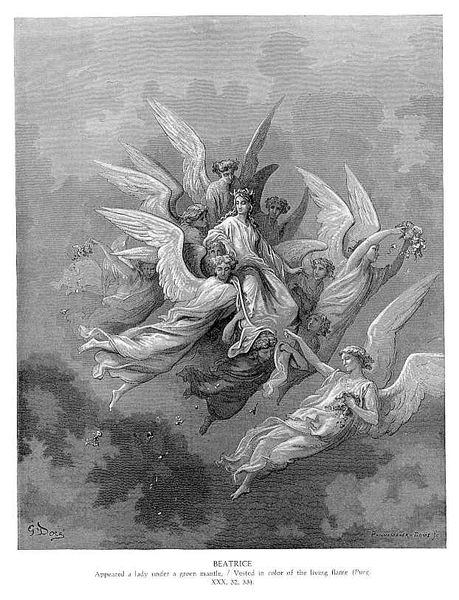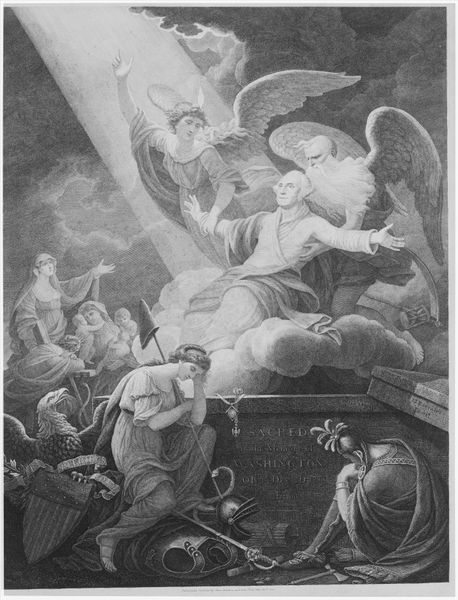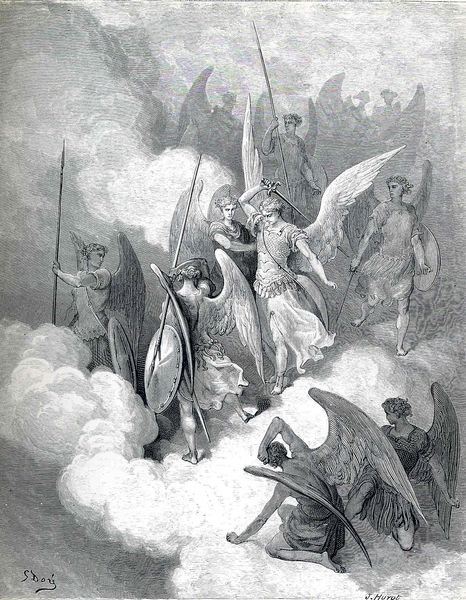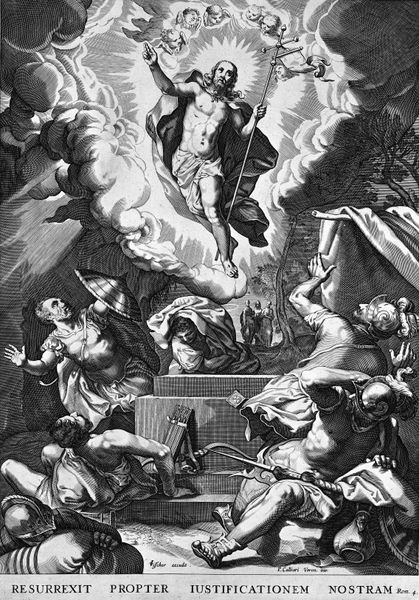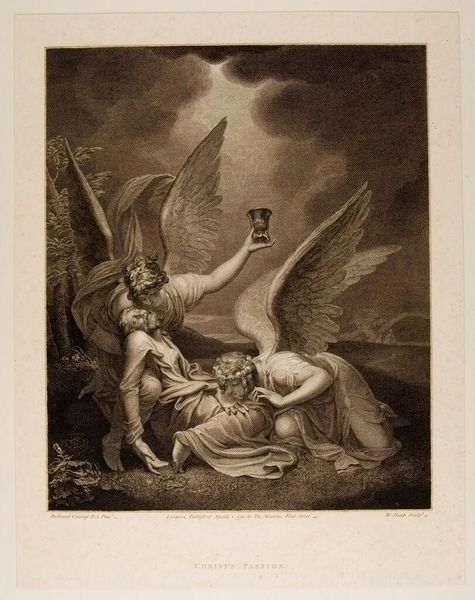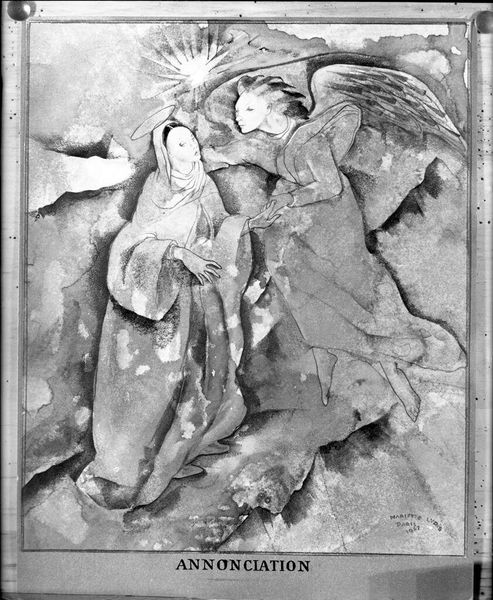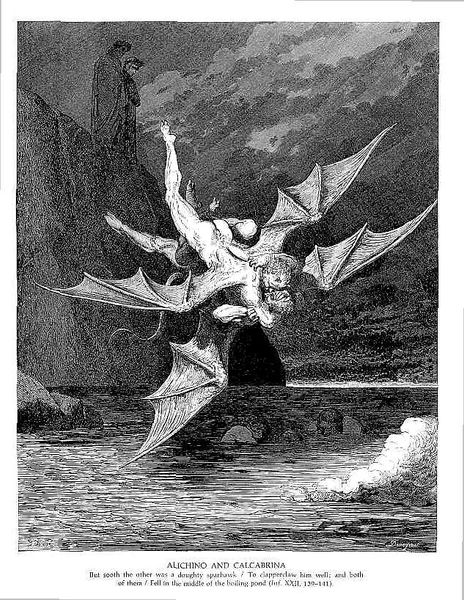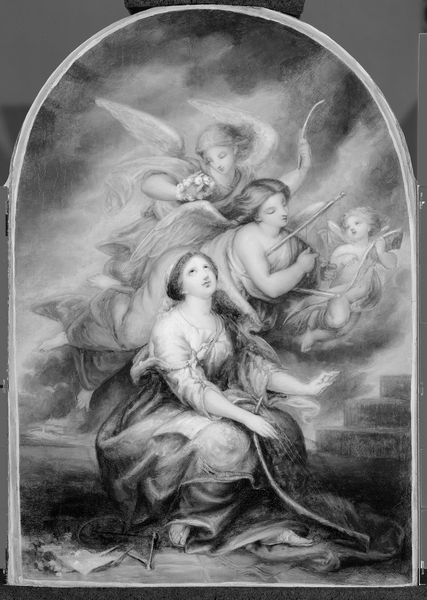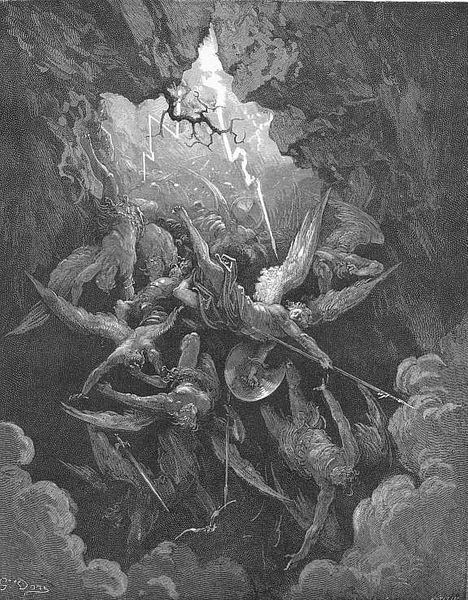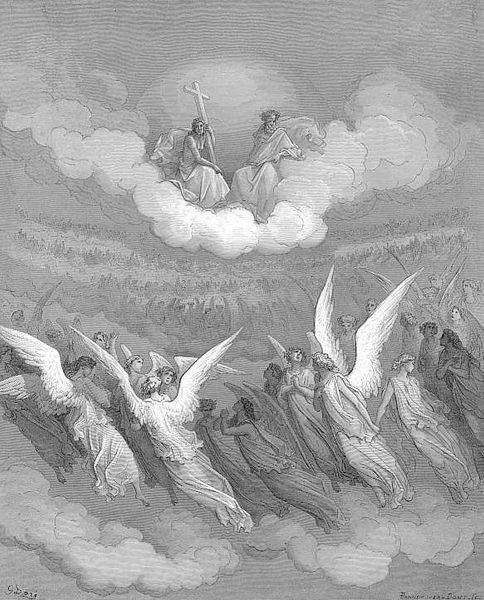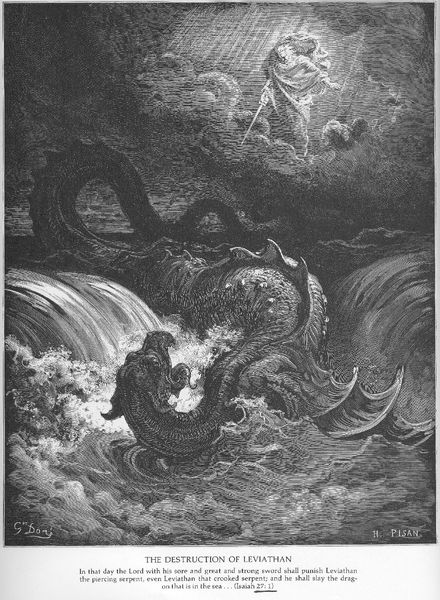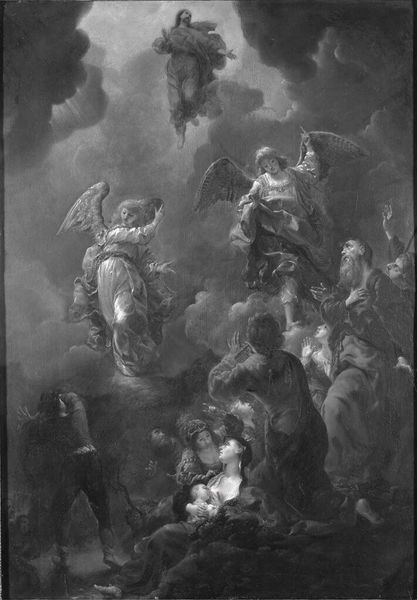
painting, gouache, paper
#
painting
#
gouache
#
paper
#
black and white
#
monochrome photography
#
history-painting
#
monochrome
#
monochrome
Dimensions: 340 mm (height) x 260 mm (width) (bladmaal)
Curator: Here we have W.A. Müller's rendition of "Christ in Gethsemane," created sometime between 1748 and 1816. It's a gouache on paper, a history painting rendered in monochrome. What are your initial thoughts? Editor: It feels quite bleak, despite the presence of angels. The limited palette contributes to this heavy sense of isolation and despair, almost as though hope is absent. Curator: Yes, it's interesting how the artist chooses to represent such a pivotal scene with this particular symbolism. Notice the light breaking through the clouds—a fairly common motif for divine intervention. However, the contrast here is stark. Editor: I see the chalice the angel is presenting to Christ, a ubiquitous symbol representing his impending sacrifice and the Eucharist. It appears almost as an offer he'd rather refuse, judging by his posture. Curator: Precisely. Think about the social context, though. This was a period of great social and political upheaval, a growing desire for societal reformation. Presenting Christ as anguished perhaps resonates with widespread feelings of turmoil and powerlessness in such volatile times. The humanisation of Christ allows a more grounded dialogue with society's hopes and concerns. Editor: I'm intrigued by how the stark monochrome itself contributes. While commonly used to depict spiritual matters and invoke emotional gravitas, the scale amplifies a universal, and arguably timeless experience. The symbol of angels and the Eucharist offer consolation amidst looming suffering. Curator: The painting's monochrome effect simplifies the emotional depth and historical setting for viewers grappling with identity in changing social landscapes. The monochromatic scale and composition speak to feelings during unstable and radical times in society. Editor: Indeed. Looking at the interplay of light and shadow and its effect in visually capturing such potent imagery is impactful and reflective. Curator: Considering this work within its historical moment, it serves not only as a religious depiction but also a potent mirror reflecting societal anxieties and longings for stability and justice. Editor: Ultimately, an enduring emblem of both personal struggle and spiritual solace conveyed through powerful, symbolic language.
Comments
No comments
Be the first to comment and join the conversation on the ultimate creative platform.
